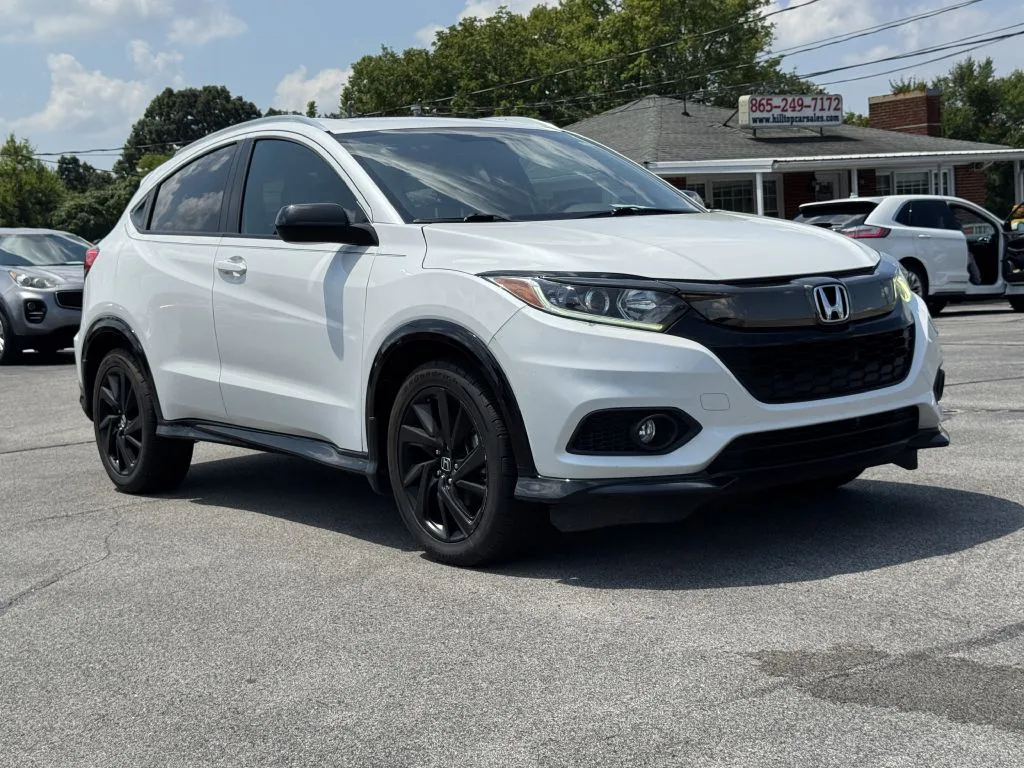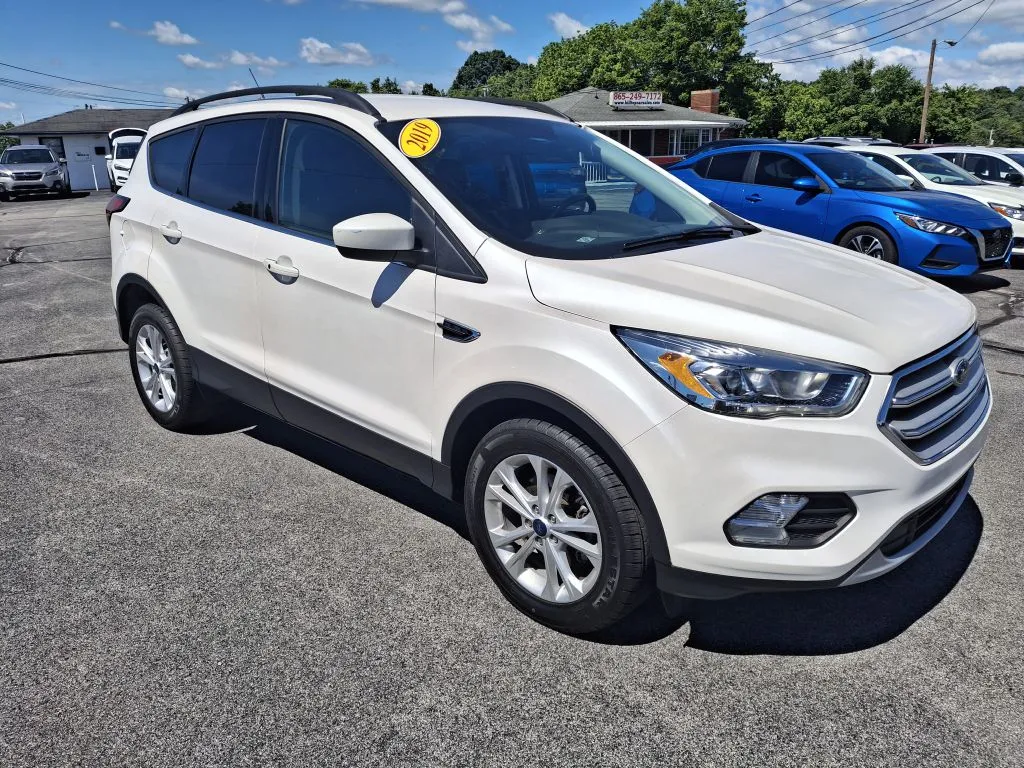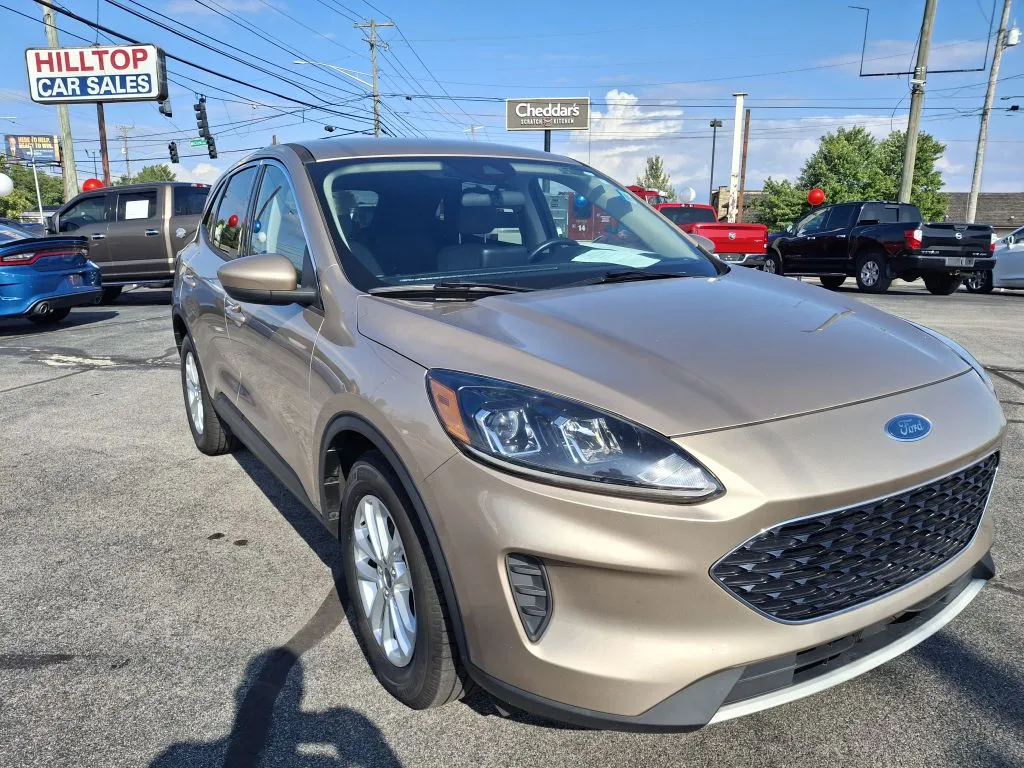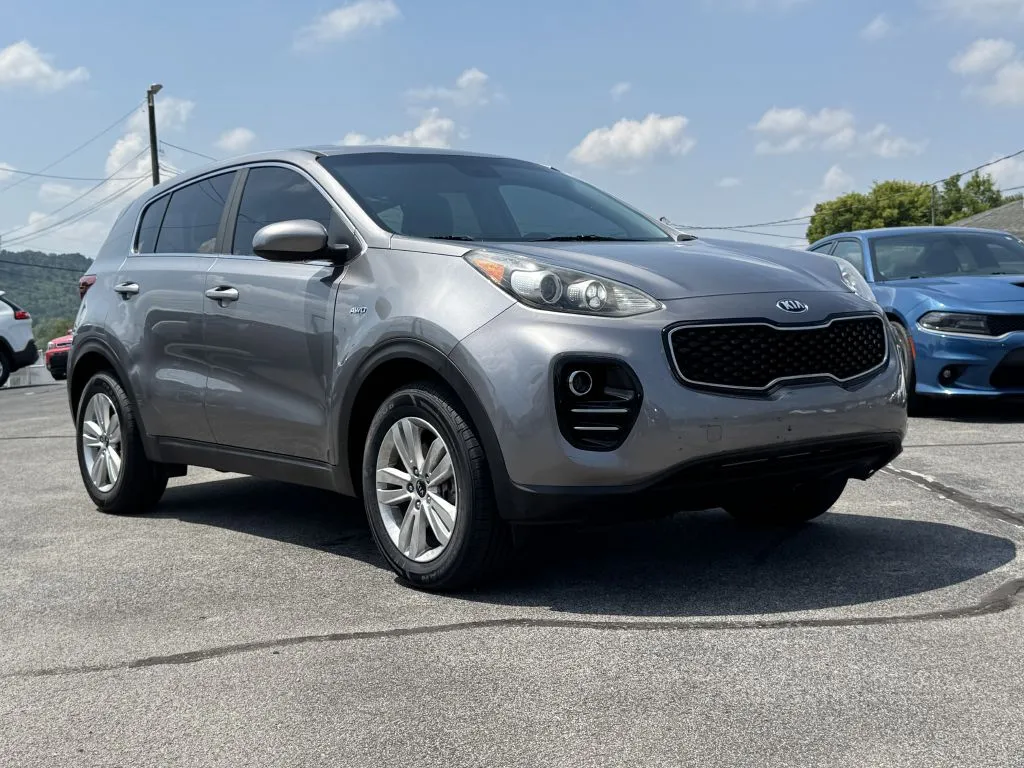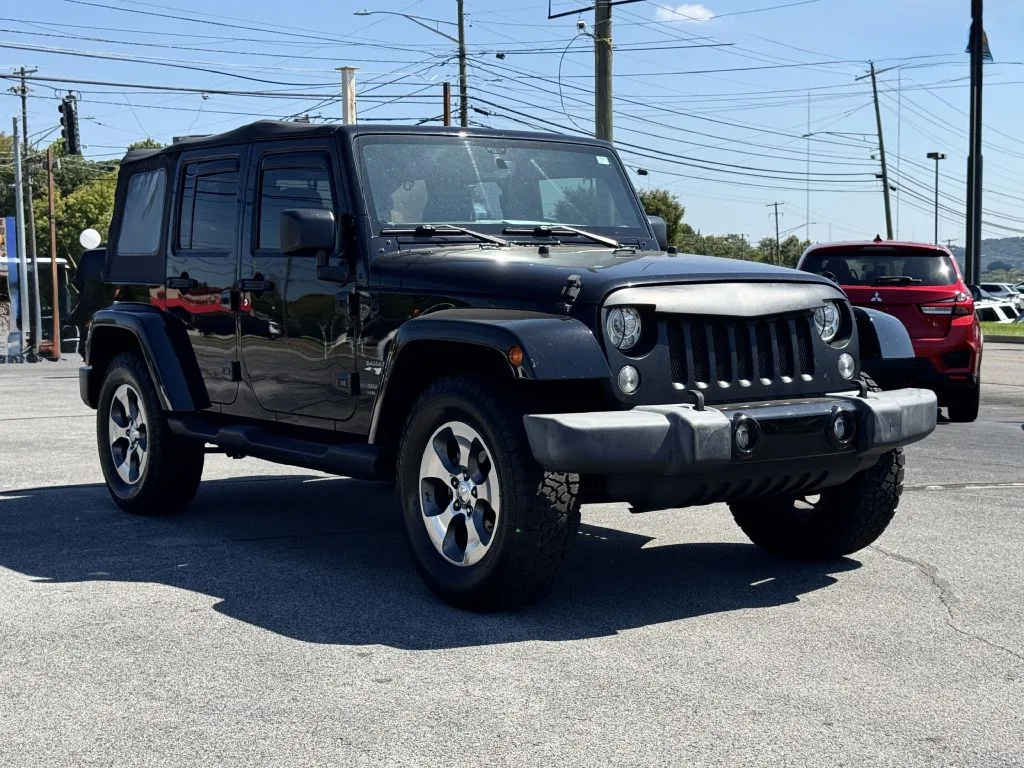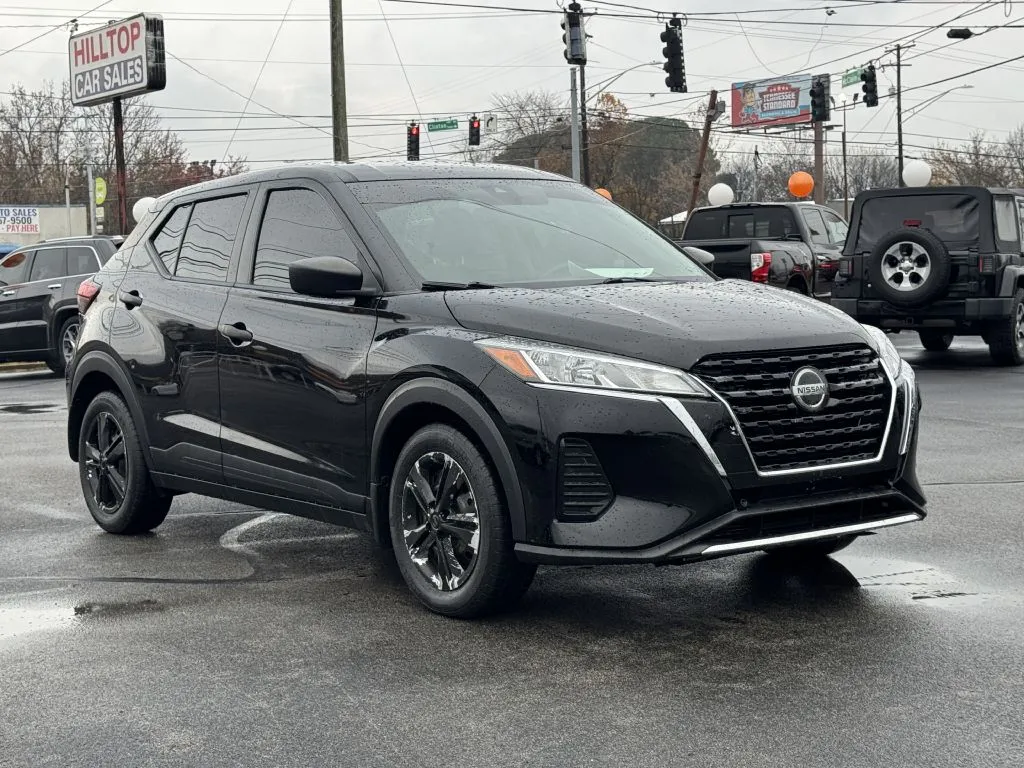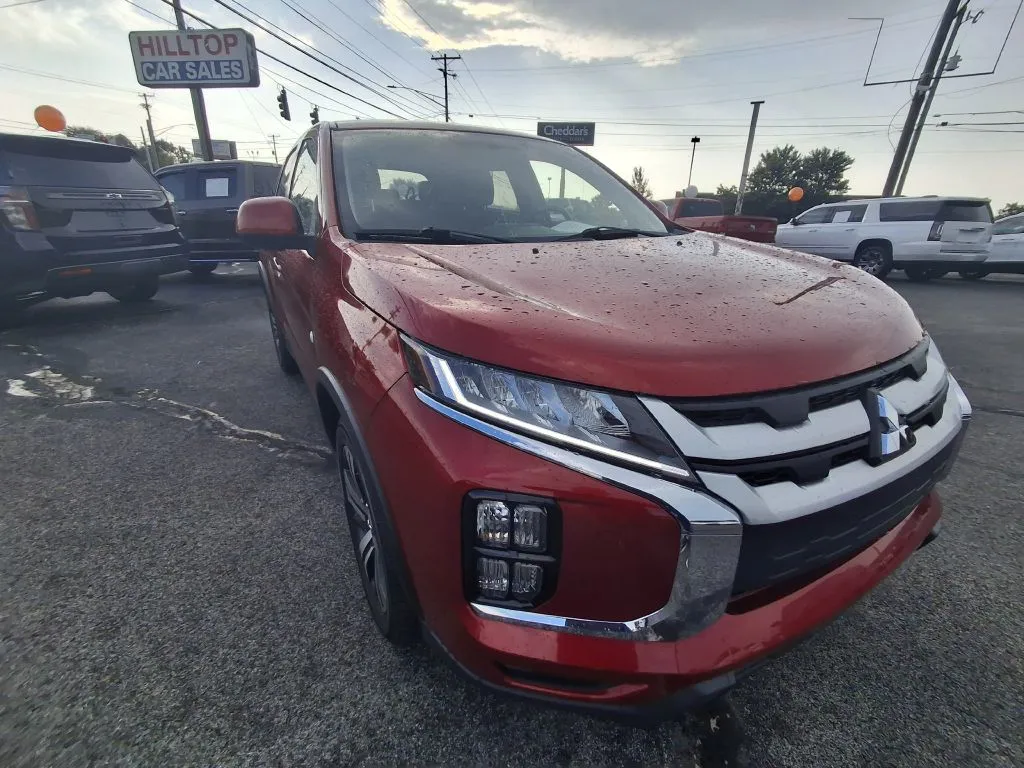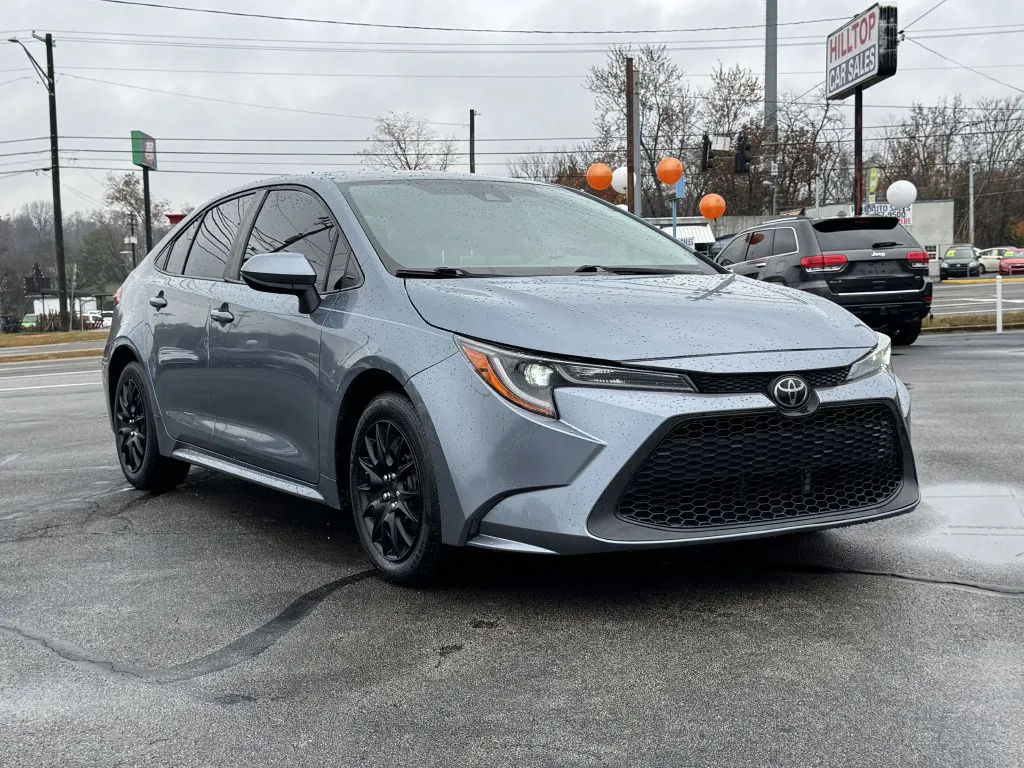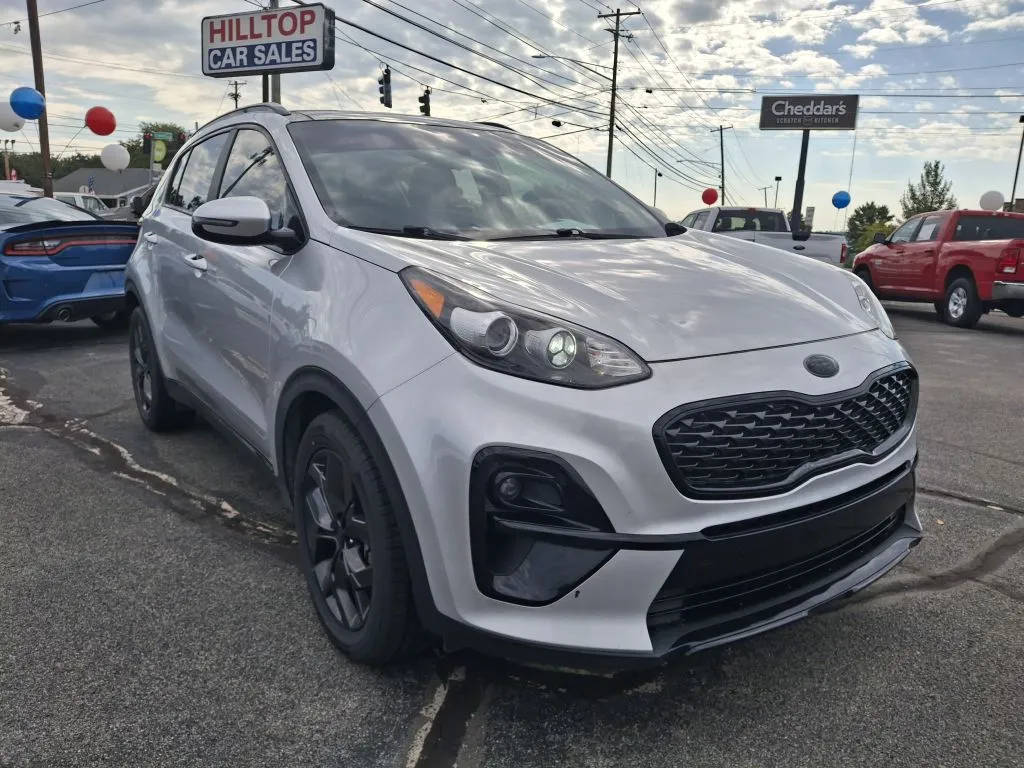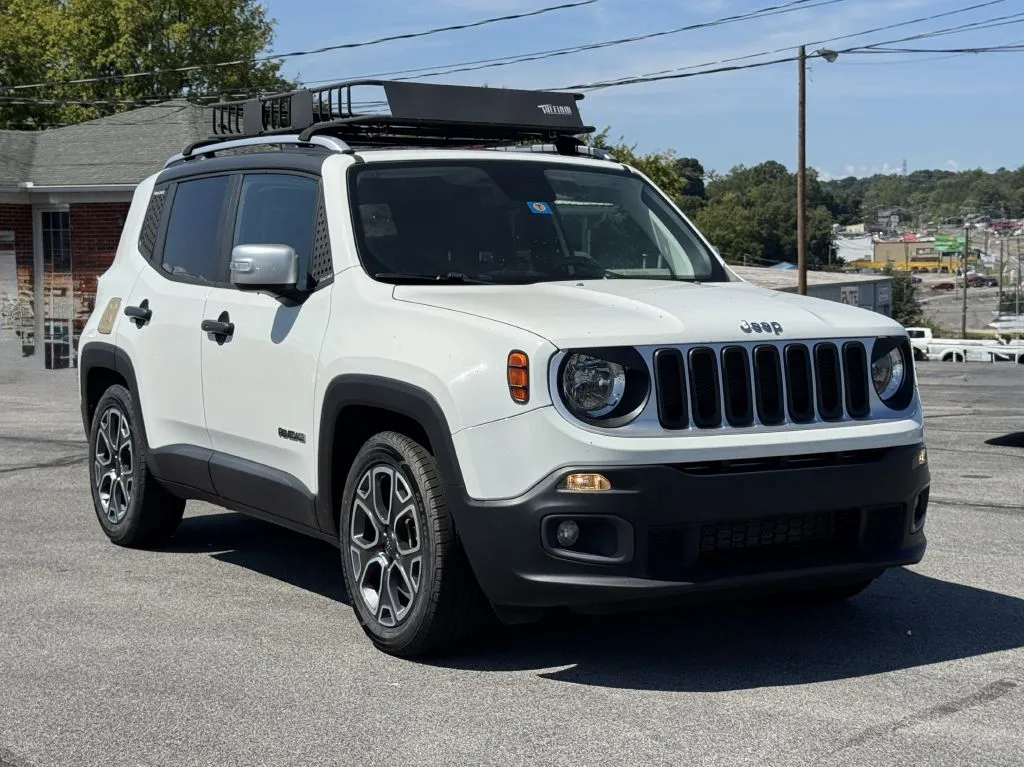Affordable Used Cars with Low Mileage: Best Buys, Tips & Key Models
Table of Contents
Best value for used cars insight
Finding an affordable used car with low mileage can feel tough, but if you know where to look and what matters, it's totally doable. Low-mileage used cars under $10,000 offer the best value by giving you years of reliable service and helping you dodge the massive depreciation hit of new vehicles.
These rides often come from recent model years. Some might even have a bit of factory warranty left, which is a nice bonus.
Finding an affordable used car with low mileage can feel tough, but if you know where to look and what matters, it's totally doable. Low-mileage used cars under $10,000 offer the best value by giving you years of reliable service and helping you dodge the massive depreciation hit of new vehicles.
These rides often come from recent model years. Some might even have a bit of factory warranty left, which is a nice bonus.
Key Takeaways
- Low-mileage used cars under $10,000 give you great value and help you avoid new car depreciation.
- Reliable models like Honda Civic and Toyota Camry are known for lasting a long time and sipping fuel.
- Doing your research and knowing your financing options helps you score a quality car for less.
Why Choose Affordable Used Cars With Low Mileage?
Budget-friendly used cars with low mileage give you the best of both worlds: you save money upfront and spend less over time. These cars usually lose value slower and need fewer repairs.
Long-Term Value and Cost Savings
Low-mileage used cars bring real value that goes way beyond the sticker price. Sometimes, you can even grab a higher-end model or cool features that would be out of reach if you bought new.
Monthly ownership costs stay lower since these cars don’t need as much work. If you buy from a place like Hertz Car Sales, you’ll often get detailed maintenance records, which is pretty reassuring.
You save big—sometimes $10,000 or more—compared to buying new. And you’re still getting a car that should last for years.
Insurance is cheaper too. Since the car’s value is lower, your monthly premiums drop.
Lower Depreciation Rates
New cars lose a ton of value the moment you drive off the lot. Used cars with low mileage have already taken that hit, so you don’t have to.
Cars with fewer miles keep their value better. If you want to sell later, you’ll probably get more for it.
After the first couple of years, depreciation slows down a lot. A three-year-old car with 30,000 miles will lose value much slower than something brand new.
That means you might be able to sell or trade it in down the road for close to what you paid.
Reduced Maintenance and Repair Needs
Low-mileage cars haven’t been driven as much, so big parts like the engine and transmission are usually in better shape. You’ll spend less on repairs and upkeep in the first few years.
Warranty coverage might still apply, depending on the car. Some manufacturer warranties last up to 60,000 or even 100,000 miles, which is a big relief if something goes wrong.
Most of the time, you’ll just need to handle basic stuff like oil changes and new tires. Bigger repairs are likely years away.
Fewer trips to the mechanic mean you can plan your budget better. No one likes surprise repair bills.
Top Benefits of Buying Low-Mileage Used Cars
Low-mileage used cars beat high-mileage ones in a lot of ways, especially when it comes to reliability, warranty options, and having newer safety tech. They usually give you better value and cost less to own.
Improved Vehicle Reliability
Low-mileage cars haven’t been through as much, so big parts like the engine, transmission, and brakes tend to be in better shape. Less daily wear means less stress on the car.
Key reliability perks:
- Engine parts are usually in good shape
- Transmissions haven’t been abused
- Brakes last longer before you need to replace them
- Suspension still feels like new
Most experts say cars under 30,000 miles are in excellent shape mechanically. They can drive almost like new for years.
Even small parts like belts and hoses last longer when the car hasn’t been driven much. That cuts down on surprise repairs.
Low-mileage cars usually don’t have many leaks, either. Seals and gaskets stay flexible and do their job better.
Better Warranty Options
Many low-mileage used cars still have some of their original warranty left. Lots of new car warranties cover up to 60,000 miles or five years.
Warranty perks:
- Powertrain coverage for the big stuff like engine and transmission
- Bumper-to-bumper protection for smaller electrical or mechanical things
- Roadside assistance might still be active
- Recall repairs are usually covered
Cars under three years old with low miles might qualify for extra warranty programs. That’s extra peace of mind.
Certified pre-owned (CPO) programs often focus on low-mileage cars. They add more warranty coverage and check the cars over before selling.
It’s also cheaper to buy third-party warranties for these cars. Insurers like them because they’re less risky.
Modern Safety and Technology Features
Low-mileage used cars are usually from recent years, so they come with newer safety and tech features. You get advanced stuff for way less than the price of a new car.
Modern safety features:
- Automatic emergency braking
- Blind spot monitors
- Lane departure warnings
- Adaptive cruise control
A lot of low-mileage used cars score high in safety tests. Groups like the Insurance Institute for Highway Safety and NHTSA check these models out every year.
Infotainment systems in these cars usually support Apple CarPlay and Android Auto. You get navigation, music, and hands-free calls without paying extra.
Newer models also get better gas mileage thanks to tech like start-stop engines and hybrids. That saves you money at the pump.
Plus, you’re more likely to get software updates and support from the manufacturer for a few years.
How to Find the Best Deals on Low-Mileage Used Cars
Smart buyers mix online research, dealership visits, and CPO programs to find the best low-mileage cars at good prices. There’s no one right way—just use every tool you can.
Searching Online Marketplaces
Online sites have the biggest selection and handy filters. You can set mileage limits, price range, and location to narrow things down fast.
Autotrader and Cars.com have tons of listings and detailed histories. You can filter by miles, age, and accident history to compare cars.
Facebook Marketplace and Craigslist sometimes have hidden gems from private sellers. Just make sure to check the car’s history before making an offer.
CarGurus checks millions of listings and rates prices as good, fair, or overpriced. It’s a quick way to spot a bargain.
Most sites let you save searches and set up alerts. That way, you’ll know as soon as something good pops up.
Visiting Reputable Dealerships
Dealerships, especially the well-known ones, usually have solid low-mileage trade-ins and lease returns. These cars often come with service records and have been checked over.
Franchise dealers get low-mileage cars from people trading up. These vehicles are usually well cared for and might still have some warranty left. Dealers can show you the maintenance history, which is helpful.
If you go near the end of the month or year, you might get a better deal. Dealers want to hit their sales goals and may offer extra discounts.
Lots of dealerships offer financing and extended warranties. They might take your old car as a trade-in too, which can lower your final price.
If you build a good relationship with a salesperson, they might give you a heads-up when a nice low-mileage car comes in.
Certified Pre-Owned Programs
Certified Pre-Owned (CPO) programs are great for low-mileage cars with extra warranty and manufacturer backing. They give buyers more confidence.
Hertz Car Sales and other rental companies sell fleet cars that are usually well maintained. You get detailed service records, which is reassuring.
CPO cars go through a multi-point inspection. Mechanics check the engine, transmission, brakes, and electronics. If anything’s not right, they fix it.
Warranty coverage is a big deal with CPO programs. Most of them extend the factory warranty and throw in roadside assistance.
Some CPO programs include perks like special financing, free maintenance, or even satellite radio. The extras can make a higher price worth it.
Most Popular Budget-Friendly Models With Low Mileage
A few models really stand out for value in the used car world. The Chevrolet Malibu gives you mid-size comfort for a compact price, and the Toyota Avalon brings luxury without the luxury price tag.
Chevrolet Malibu: Affordable Performance
The Chevrolet Malibu is a top pick for budget-friendly used cars. It’s a mid-size sedan with roomy seats and a smooth ride—feels more expensive than it is.
Low-mileage Malibus from 2016-2019 usually cost $12,000 to $18,000. You’ll get modern safety tech and engines that can hit 36 mpg on the highway.
The Malibu’s reliability has gotten a lot better in recent years. Maintenance won’t break the bank, and parts are easy to find.
Why people like it:
- Spacious interior, even in the back
- Smart infotainment with phone integration
- Solid warranty on CPO models
- Good gas mileage
If you can, aim for a 2018 or newer model. Those years got better features and fixed some earlier issues.
Toyota Avalon: Value in Full-Size Sedans
The Toyota Avalon gives you full-size sedan luxury at a much lower price than you’d expect. It’s roomy and loaded with features, plus Toyota’s known for dependability.
Low-mileage Avalons from 2015-2019 usually start around $22,000. The V6 engine is smooth and strong, making highway trips easy.
Inside, it feels almost like a luxury car—soft materials and controls that make sense. Five adults fit comfortably, with lots of legroom.
Notable features:
- Strong 3.5-liter V6 with 301 horsepower
- Premium sound and leather seats
- Advanced safety tech for collision prevention
- Holds its value really well
Avalons are cheap to maintain and last a long time. Many go well past 200,000 miles if you take care of them.
Hyundai Elantra: Economy and Features
The Hyundai Elantra packs a lot of value into a small package. This compact sedan comes with more standard features than most competitors.
Low-mileage Elantras from 2017-2020 usually cost $10,000 to $16,000. The 5-year/60,000-mile warranty is a nice safety net for used buyers.
Newer Elantras have better tech and quality. The inside is surprisingly roomy for a compact car.
Why it stands out:
- Warranty can transfer to the next owner
- Infotainment with Android Auto and Apple CarPlay
- Up to 40 mpg on the highway
- Good prices compared to other small sedans
The Elantra’s sharp looks and reliable drive make it a favorite for younger folks. Safety scores are strong, and insurance costs stay low.
Best Compact and Subcompact Cars to Consider
These three models deliver great gas mileage and have proven themselves over time. Each one has its own strengths depending on what you need for daily driving.
Honda Accord: Proven Reliability
The Honda Accord stands out as a compact car with solid long-term dependability.
Many models from 2015-2018 can easily hit over 200,000 miles if you keep up with basic maintenance.
Fuel Economy Benefits:
- 4-cylinder models usually get 28-32 mpg combined
- Great fuel economy for everyday driving
You’ll save on operating costs compared to bigger vehicles.
Parts for the Accord are affordable and you can find them at most repair shops.
Key Maintenance Advantages:
- The timing chain design means fewer big repairs
- Strong resale value sticks around
- The newer CVT transmission has a good track record
Safety ratings stay high, with 5-star NHTSA scores across several years.
Inside, it’s roomier than most compact cars, but you don’t lose out on fuel efficiency.
Ford Focus: Efficiency on a Budget
The Ford Focus gives you one of the cheapest ways to get into a compact car.
Models from 2015-2017 offer solid fuel economy and usually come at pretty reasonable prices.
Fuel Efficiency Highlights:
- Manual transmission versions can reach up to 36 mpg on the highway
- The compact design keeps fuel use low
Lightweight construction helps with overall efficiency.
The Focus works well for both city and highway driving.
Its smaller size makes parking less of a hassle in busy areas.
Budget-Friendly Features:
- Lower purchase prices than a lot of competitors
- Maintenance costs stay manageable
- Plenty of used options out there
The hatchback version is handy if you need extra cargo space, but you don’t lose that good gas mileage.
Most Focus models have up-to-date safety features and infotainment systems.
Scion xD: Compact City Commuter
The Scion xD is a subcompact built for city life.
It’s small, easy to park, and gets impressive gas mileage.
City Driving Advantages:
- Tiny footprint fits into tight parking spots
- Super easy to handle in traffic
You can expect 30+ mpg in mixed driving.
Even though it’s a subcompact, the xD surprises you with a decent amount of interior space.
Toyota backs it, so the mechanical parts are reliable and easy to find.
Practical Benefits:
- Insurance costs stay low thanks to its size
- Maintenance is pretty minimal
- Strong gas mileage keeps operating costs down
Since Toyota discontinued the xD, used prices are lower.
But Toyota dealers still service them, since they share parts with other Toyota models.
Top Affordable Used SUVs and Crossovers
Used compact SUVs are a smart pick if you want more space and utility without the sticker shock of a new car.
The Toyota RAV4 offers solid performance and a roomy cargo area.
The Subaru Outback comes standard with all-wheel drive, so you get confident handling when roads get tricky.
Compact SUV Advantages
Compact SUVs really hit the sweet spot between fuel efficiency and practicality.
You get a higher seating position than in a sedan, but still better gas mileage than the big SUVs.
Most compact SUVs have plenty of room inside for people and stuff.
That higher seating helps with visibility when you’re in traffic or trying to park.
Insurance usually costs less than it does for full-size SUVs.
They fit into regular parking spots and garages without trouble.
Key benefits include:
- Better fuel economy than midsize SUVs
- Easier to maneuver in the city
- Lower maintenance costs than luxury models
- Resale values tend to hold up
Lots of compact SUVs offer all-wheel drive.
You get better traction on wet roads or in light snow, but you don’t pay for it at the pump like you do with bigger 4WD systems.
Toyota RAV4: Reliable and Spacious
The Toyota RAV4 keeps showing up as one of the most reliable used compact SUVs.
Models from 2019-2022 come with up-to-date safety tech and are built to last.
RAV4s usually hold their value pretty well.
Starting in 2019, every trim got Toyota Safety Sense 2.0 as standard.
Interior space highlights:
- 37.5 cubic feet of cargo space with the seats up
- 69.8 cubic feet if you fold the rear seats
- Seats five adults comfortably
The 2.5-liter four-cylinder engine gives you enough power for daily driving.
All-wheel drive models handle rough weather without hurting fuel economy much.
Used RAV4s with 30,000-50,000 miles usually sell for $22,000-$28,000.
Hybrid versions cost more, but the fuel savings can be worth it.
Subaru Outback: All-Weather Capability
The Subaru Outback blends wagon practicality with SUV ground clearance.
Every model comes standard with all-wheel drive, so it’s ready for all kinds of weather.
Outbacks from 2020-2022 come with Subaru’s EyeSight safety suite.
Inside, it’s roomy and comfortable, with flexible cargo space.
Outback advantages:
- 8.7 inches of ground clearance
- Standard all-wheel drive
- 32.5 cubic feet of cargo space
- Strong safety ratings
The symmetrical all-wheel drive system gives you confidence on slick roads.
It keeps an eye on wheel grip and shifts power where it’s needed.
Used Outbacks with average miles usually run between $24,000-$30,000.
The 2.5-liter engine is smooth and doesn’t burn too much gas.
Prioritizing Fuel Efficiency and Economy
Fuel costs can really add up over time.
If you pick a car with great gas mileage, you’ll save money month after month and still get where you need to go.
Models With Excellent Fuel Economy
Some used car models really shine for their fuel efficiency.
The Toyota Prius leads the way, getting up to 57 mpg combined.
It’s hard to beat if you’re watching your budget closely.
The Honda Civic isn’t far behind, with 36 mpg combined.
It’s reliable, doesn’t cost much to keep up, and makes sense for long-term owners.
Hybrid vehicles top the charts for fuel economy.
The Toyota Corolla Hybrid gets 50 mpg combined, and the Hyundai Elantra Hybrid can reach 54 mpg.
If you want a compact sedan, the Nissan Versa and Volkswagen Jetta are good bets at 35 mpg and 34 mpg, and you get more space than a tiny subcompact.
Balancing Power and Efficiency
You’ll want enough power for highway driving and merging.
Four-cylinder engines usually give the best mix of pep and fuel savings.
The Honda Accord manages 32 mpg and still has strong acceleration from its turbo engine.
That makes highway driving smoother without guzzling gas.
Some fuel-efficient cars feel a little sluggish when passing.
The Toyota Camry lets you pick from several engines, so you can go for max efficiency or a bit more power.
Hybrid powertrains help here too.
They pair electric motors with gas engines, so you get quick acceleration and still save on fuel in the city.
Long-Term Savings From Lower Fuel Costs
Fuel-efficient cars can save you thousands each year.
If your car gets 35 mpg instead of 25, you’ll spend way less on gas.
Monthly fuel savings add up fast.
A 25 mpg car versus a 40 mpg car means about $600 extra in your pocket each year if you drive an average amount.
You’ll also make fewer stops at the pump.
That’s more convenient and protects you a bit from wild swings in gas prices.
Resale value stays higher for fuel-efficient models.
People are always looking for cars that won’t cost them a fortune at the pump.
Safety and Reliability in Affordable Used Cars
You don’t have to spend a ton to get a used car that’s both safe and reliable.
Checking ratings from trusted groups and sticking with proven brands can help you find the best deals.
Understanding Safety Ratings
Two big organizations test car safety in the U.S.
The National Highway Traffic Safety Administration (NHTSA) uses a five-star system.
The Insurance Institute for Highway Safety (IIHS) gives Top Safety Pick awards to cars that do well in their tests.
Key Safety Features to Look For:
- Advanced airbag systems
- Electronic stability control
- Anti-lock brakes
- Backup cameras
- Blind spot monitoring
The Toyota Prius has earned IIHS Top Safety Pick and other safety awards.
The Honda Accord and Toyota Camry also get high marks from both groups.
Safety ratings matter, even for older cars.
Many vehicles from 2012-2016 still protect you well in a crash.
By 2012, most cars came standard with electronic stability control.
Reliable Brands to Trust
Japanese automakers usually top the charts for reliability.
Toyota and Honda build cars that, with basic care, can last well past 200,000 miles.
Top Reliable Models Under $15,000:
- Toyota Prius C (2012-2019): 4.6/5 consumer rating, 4.5/5 reliability
- Honda Accord (2013-2017): 4.4/5 consumer rating, 4.5/5 reliability
- Toyota RAV4 (2012-2015): 4.1/5 consumer rating, 4.5/5 reliability
- Mazda 3 (2014-2016): 4.4/5 consumer rating, 4/5 reliability
Lexus gives you a luxury feel with Toyota’s reliability.
The ES 350 from 2012-2015 is well built and lasts a long time.
Korean brands like Hyundai and Kia have really stepped up.
The Kia Soul offers good safety features and fuel savings, and doesn’t break the bank.
Importance of Regular Maintenance
A car’s maintenance history matters more than its badge or model year.
A well-cared-for car from any brand will outlast a neglected one, even if the neglected car is usually more reliable.
Essential Maintenance Records to Review:
- Oil changes every 3,000-5,000 miles
- Brake checks and replacements
- Transmission service
- Timing belt replacements
- Coolant system checks
A pre-purchase inspection by a professional can catch hidden problems.
A good mechanic will spot things that could affect safety or reliability.
Regular maintenance keeps your safety systems working.
Changing brake fluid helps your car stop like it should.
Rotating tires gives you better traction and helps them last longer.
Even the most reliable brands need care.
Honda and Toyota cars need the same basic upkeep as any other vehicle.
If you stick to the schedule in the manual, you’ll avoid most big repair bills.
Securing Financing for Low-Mileage Used Cars
Getting the right loan can make a low-mileage used car fit your budget.
Interest rates for used cars are usually higher than for new, but with good credit and a little prep, you can find better deals.
Comparing Loan Options
Used car interest rates jump around depending on the lender.
If your credit is great, you might get a rate around 5.5%.
If it’s not so great, you could see rates as high as 16.8% or more.
Banks and credit unions usually offer the best rates for used car loans.
Credit unions often beat banks if you’re a member.
Online lenders like Carvana and Vroom let you prequalify quickly.
Still, it’s smart to compare their rates with what your local banks or credit unions offer.
Dealer financing is easy, but sometimes they bump up the interest rate to make extra money.
Loan length changes your total cost a lot.
A 36-month loan at 5.44% costs less in the end than a 60-month loan at 5.74%, even though the monthly payment is higher.
Loan TermInterest RateMonthly PaymentTotal Interest36 months5.44%$695$1,98060 months5.74%$442$3,520
Understanding Total Ownership Costs
Your car payment isn’t the whole story.
The total ownership cost includes interest, insurance, registration, and upkeep.
Interest payments go up with longer loans.
A $20,000 loan might cost $1,500 more over 60 months than over 36.
Insurance is pricier when you finance, since lenders want full coverage.
That adds to your monthly bill.
Registration and taxes depend on where you live.
Sometimes, these upfront costs add thousands to your total, which means you might end up financing more than you expected.
Low-mileage used cars usually need fewer repairs at first.
But you’ll still want to budget for regular things like oil changes, new tires, and brake pads.
Depreciation can leave you owing more than your car’s worth if you go for a long loan.
Shorter loan terms help you stay ahead.
Tips for Getting Pre-Approved
Pre-approval gives buyers more negotiating power. It also helps you figure out your budget before you start shopping.
The process usually takes just a day or two. You'll get a clear interest rate and know your loan amount.
Check your credit scores before you apply. Free sites like annualcreditreport.com can show your current credit status and point out areas to improve.
Apply with a few different lenders within 30 days. Credit agencies count multiple auto loan inquiries as one if you do them close together.
Gather your documents like pay stubs, bank statements, and proof of employment. Having everything ready speeds things up.
Put down as much as you can for the down payment. For example, $5,000 down instead of $3,000 can save you almost $300 over the life of the loan.
Pre-approval is especially helpful when buying from a private seller. It also gives you a baseline to compare dealer offers.
Final Tips for Smart Used Car Buying
Smart buyers ask the right questions and watch for warning signs. A good test drive can reveal issues you might miss in a quick look.
Essential Questions to Ask Sellers
Service history is huge. Ask for maintenance records—oil changes, brake work, big repairs. Cars with full records are usually worth more.
Accident history affects safety and value. Ask for a vehicle history report or just ask directly about any crashes.
Even small accidents can cause headaches later. Don't be shy about asking.
Ask about recent repairs and what prompted them. Did the seller fix known problems, or do some issues still linger?
Ownership details matter when you transfer the title. Ask how many owners the car's had and why they're selling.
If a car's had several owners in a short time, that's a red flag.
Key questions to ask:
- When was the last oil change?
- Have you replaced the timing belt?
- Does the air conditioning work?
- Any warning lights on the dash?
Red Flags and Warning Signs
Rust spots around wheel wells, door frames, or the trunk are trouble. Surface rust is fixable, but deep rust can wreck the car's structure.
Mismatched paint could mean accident repairs or bodywork. Check for color differences, especially on doors and bumpers.
Unusual noises at startup or idle might point to engine problems. Grinding, squealing, or knocking could mean big repair bills.
Worn tires with uneven wear usually mean alignment or suspension issues. Make sure all four tires match and wear evenly.
Warning signs to avoid:
- Seller refuses a test drive
- Missing or sketchy title documents
- Price is way below market value
- High-pressure sales tactics
- Seller won't allow an inspection
Taking Advantage of Test Drives
Cold starts show the most problems. Try to start the car before it's warmed up.
Listen for rough idle, slow starts, or weird noises.
City and highway driving test different things. In stop-and-go traffic, check the transmission. On the highway, pay attention to acceleration and steering.
Test all the electrical stuff. Try the lights, radio, AC, power windows, and charging ports. Electrical fixes can get pricey.
Braking performance really matters for safety. The car should stop smoothly and straight.
Feel for vibrations in the steering wheel or brake pedal.
Test drive checklist:
- Drive for at least 20 minutes
- Try parking and reversing
- Test the emergency brake
- Check all the gears
- Listen for odd sounds at different speeds
Frequently Asked Questions
Finding affordable used cars with low mileage isn't easy, but it's doable with the right approach. Budget buyers can find reliable vehicles under $5,000 by focusing on certain car types, knowing the risks, and picking the right places to search.
What factors should be considered when searching for an affordable used vehicle with low mileage?
The car's age compared to its mileage says a lot about its value. Cars averaging less than 12,000 miles per year are usually considered low mileage.
A good vehicle history report tells you about accidents, maintenance, and previous owners. This helps confirm the mileage and spot any issues.
Maintenance history can matter more than mileage. Sometimes a well-maintained car with higher miles is better than a low-mileage car that's been ignored.
Low-mileage cars usually cost more upfront. Weigh that against possible savings on repairs and gas.
How can I find a reliable used car with low mileage for less than $5,000?
Compact cars like the Honda Fit are a solid bet for low mileage and low price. They don't lose value as fast and get good gas mileage.
You might find older cars with very low miles in this price range. Some garage-kept or little-used cars from elderly owners can be a great deal.
Private sellers often have better prices than dealers for low-mileage cars. Still, always inspect the car and get a vehicle history report.
Sometimes lease returns from a few years ago show up in this price range. They often have full service records.
What are the best practices for buying a used car that balances affordability with lower mileage?
Check the odometer reading against maintenance records and history reports. This helps you spot odometer fraud or weird gaps.
Look for cars mostly used for city driving instead of long highway trips. City cars usually rack up fewer miles but still get regular use.
If your budget allows, check out certified pre-owned cars. They get inspected and might come with a warranty, but they do cost more.
Buy when dealers want to clear out old inventory—like at the end of the year or when new models arrive.
Which types of vehicles tend to have lower mileage and remain budget-friendly on the used market?
Hybrid cars like the Toyota Prius often have lower mileage. Most hybrid owners use them for city driving and short commutes.
Compact sedans and hatchbacks usually offer the best value for low-mileage used cars. The Honda Fit and Chevrolet Volt pop up a lot with good mileage numbers.
Electric cars can have lower mileage because of their range limits and how people use them. But always check the battery and charging history.
Cars owned by seniors tend to have super low miles. They’re often garage-kept and well looked after.
What are the potential downsides to purchasing an older low-mileage vehicle?
Cars with really low miles might have sat for long stretches. That can mess up seals, fluids, and rubber parts.
If a car gets driven less than 5,000 miles a year, it could have battery issues, dry-rotted tires, or old fluids.
Older low-mileage cars might not have modern safety features or tech. Think about whether missing things like stability control matter to you.
Finding parts for old cars can get tricky and expensive. Even low-mileage cars might need big repairs just because of their age.
Are there specific dealership or online platforms recommended for locating inexpensive low-mileage used cars?
Certified pre-owned programs at major dealerships offer inspected low-mileage vehicles with warranties. Usually, these cars come from lease returns.
Online platforms like Cars.com and Autotrader let you filter for low-mileage cars in your price range. They also have comparison tools and show you vehicle history.
Local dealerships that focus on used cars often get lease returns and trade-ins. If you get to know these dealers, you might hear about good cars before everyone else does.
Some credit unions have auto sales programs just for their members. You might find better financing and a decent selection of low-mileage vehicles there.



